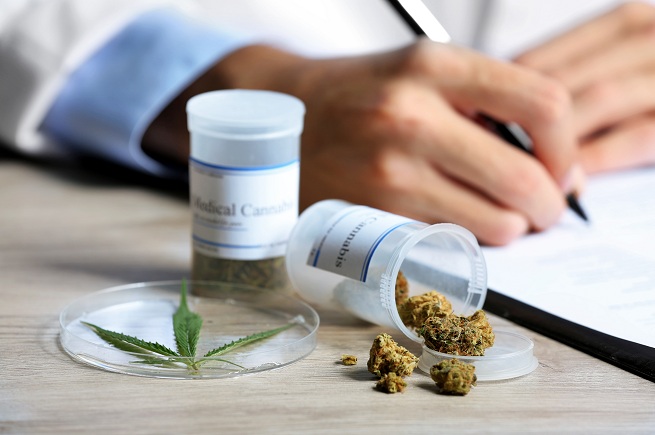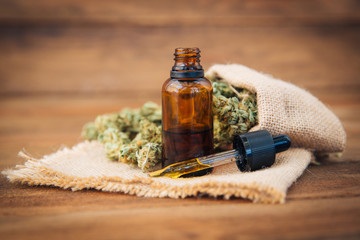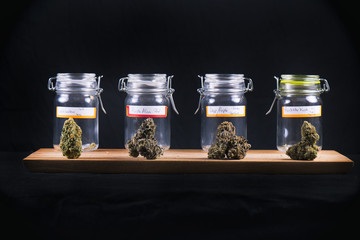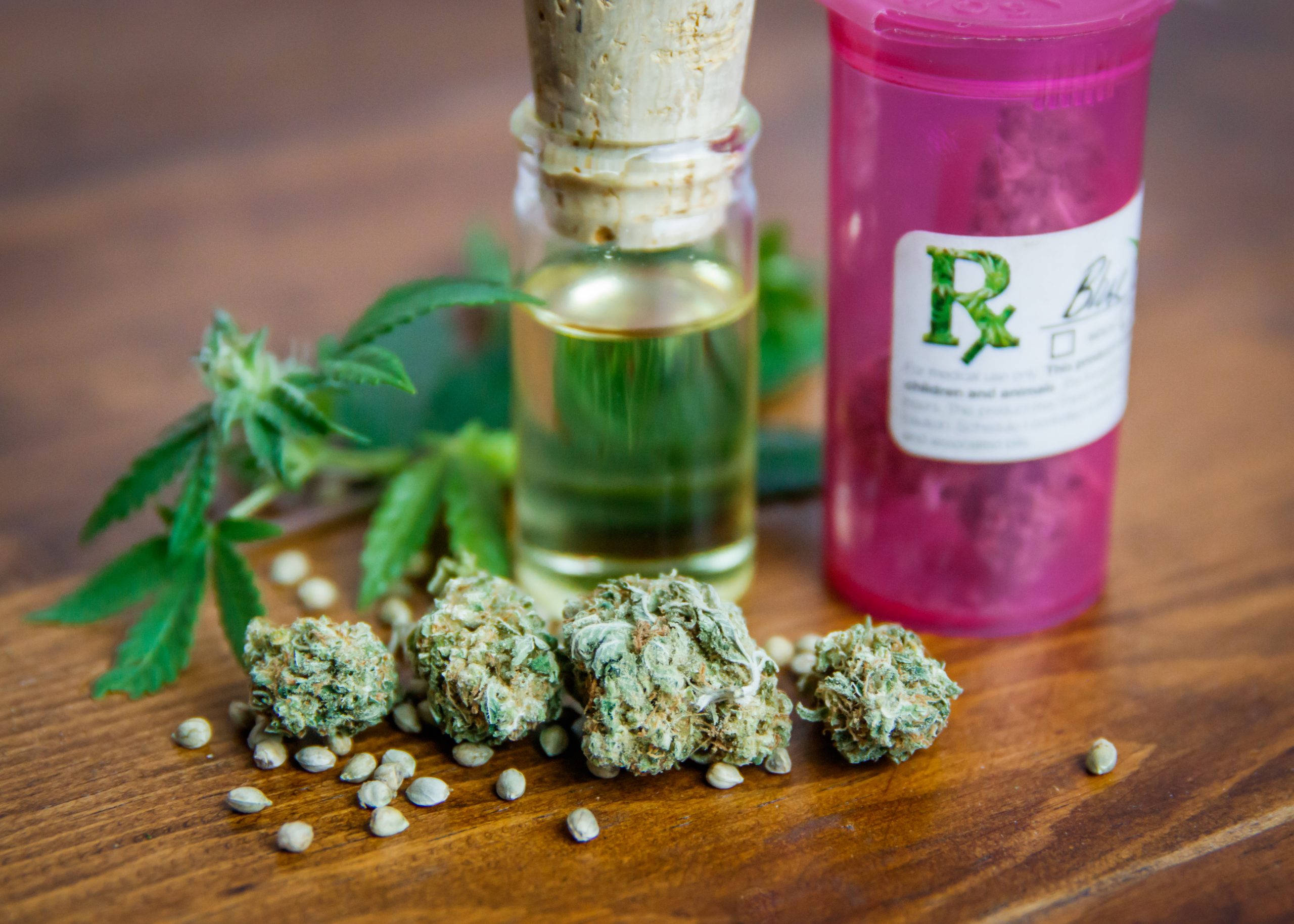 Medical marijuana, or the use of cannabis for medicinal purposes, has potential therapeutic benefits for various health conditions. According to the National Institute on Drug Abuse, it can effectively treat chronic pain, chemotherapy-induced nausea, and muscle spasms caused by multiple sclerosis.
Medline Plus highlights that medical marijuana can treat chronic health conditions like cancer, AIDS, glaucoma, seizures, epilepsy, severe nausea, and wasting syndrome (severe weakness due to excessive weight loss). In addition, Psychiatric Times shows that patients use medical cannabis to reduce symptoms of:
• Anxiety and depression
• ADHD and PTSD
• Bipolar disorder
• Opiate dependence
• Insomnia
• Schizophrenia
Indica and sativa are two primary cannabis strains. Most people ask: “which marijuana strain should I use?” Bear in mind that both strains have different physical characteristics, effects, and potential medical uses. Today’s article will differentiate between indica and sativa to help you make an informed decision.
Indica Vs. Sativa: Side-by-Side Comparison
Understanding the difference between Indica and Sativa strains is crucial because it can help medical marijuana users choose the most appropriate strain for their needs. Different strains have different effects, and choosing the right strain can help to achieve optimal therapeutic benefits and avoid potential adverse effects.
Indica and Sativa strains differ primarily in their physical characteristics and the effects they produce. Indica strains are typically shorter and bushier, while Sativa strains are taller and more slender. Research has shown that Indica strains have more sedative effects, while Sativa strains are more energizing and uplifting.
Physical Characteristics
A 2019 study on Frontiers highlights that indica plants are shorter and bushier with broader leaves and denser buds, while Sativa plants are taller and more slender with thinner leaves and long buds. Environmental conditions in which they were traditionally grown influenced these differences.
According to the American Botanical Council, indica strains originated in the mountainous regions of India, Pakistan, and Afghanistan, where they evolved to withstand harsh conditions. On the other hand, Sativa strains originated in the tropical areas of Mexico, Colombia, and Southeast Asia, where they grew taller to compete for sunlight.
Chemical Composition
According to a study published by Science Direct, indica and sativa strains have different chemical compositions. Indica strains typically have higher cannabidiol (CBD) and lower tetrahydrocannabinol (THC) levels. In comparison, Sativa strains usually have higher levels of THC and lower levels of CBD.
The chemical composition of cannabis can vary depending on several factors, including the strain, growing conditions, and extraction method. The cannabinoids, such as THC and CBD, interact with the body’s endocannabinoid system to produce various physiological effects.
The ratio of THC to CBD plays a significant role in determining the effects of cannabis, and the different proportions in Indica and Sativa strains can contribute to their distinct effects.
However, the chemical composition of cannabis is highly complex and can also include other compounds, such as terpenes and flavonoids, that may also play a role in its effects. Common terpenes and flavonoids found in indica and sativa strains are:
Compound Type Indica Sativa
Myrcene Terpene Calming, Sedative Energizing, Uplifting
Limonene Terpene Anti-anxiety, Mood-boosting Anti-inflammatory, Digestive aid
Beta-Caryophyllene Terpene Pain-relieving, Anti-inflammatory Stress-reducing, Anti-anxiety
Alpha-Pinene Terpene Memory-enhancing, Anti-inflammatory Energy-boosting, Anti-anxiety
Beta-Pinene Terpene Alertness, Focus Anti-inflammatory, Pain-relieving
Cannflavin A Flavonoid Anti-inflammatory, Pain-relieving Neuroprotective, Anti-anxiety
Apigenin Flavonoid Anti-anxiety, Anti-inflammatory Anti-cancer, Anti-depressant
Kaempferol Flavonoid Anti-inflammatory, Antioxidant Anti-cancer, Cardiovascular benefits
Orientin Flavonoid Antioxidant, Anti-inflammatory Neuroprotective, Anti-anxiety.
Interactions with Receptors
So, how do indica and sativa strains interact with cannabinoid receptors in the body? Your body’s endocannabinoid system facilitates the effects of both strains. The system includes two primary receptors: CB1 and CB2.
According to PubMed Central (PMC), CB1 receptors are primarily in the brain and nervous system, while CB2 receptors are in the immune system and other peripheral tissues. THC, the primary psychoactive compound in cannabis, interacts with CB1 receptors in the brain and nervous system, producing its characteristic psychoactive effects.
Conversely, CBD has a low affinity for CB1 receptors but can interact with other receptors in the endocannabinoid system, such as CB2 and the vanilloid receptor. The different ratios of THC to CBD in Indica and Sativa strains can impact how they interact with these receptors, affecting their potential therapeutic effects.
The endocannabinoid system is complex, and researchers still study the potential therapeutic effects of cannabis. More research is needed to fully understand how different strains of cannabis interact with cannabinoid receptors in the body and how this impacts their healing mechanisms at the cellular level.
Health Benefits and Side Effects
A study published by the British Journal of Pharmacology states that indica strains have properties for relaxing, soothing, and sedative effects and tend to have higher levels of the cannabinoid CBD.
So this makes them a popular choice for individuals seeking pain relief, relaxation, and help with insomnia. In a study of medical cannabis users, 78% reported using indica strains for pain relief, while 77% reported using them for sleep.
Another study shows that indica strains benefit individuals with anxiety, as they can reduce anxiety-related behaviors in mice. However, indica strains can also have side effects like lethargy and lack of motivation. So, indica is not ideal for daytime use.
On the other hand, Sativa strains are known for their energizing, uplifting effects and tend to have higher levels of the cannabinoid THC. According to All Natural MD, Florida, sativa is popular for individuals seeking to enhance mood, creativity, and focus.
Most people use sativa strains to relieve stress, anxiety, and depression. It also helps reduce fatigue and burnout. However, sativa strains can also have some side effects. For instance, they may cause overstimulation or racing thoughts in some individuals, making them unsuitable for those with anxiety or attention deficit hyperactivity disorder (ADHD).
These effects can vary widely depending on the individual and the specific strain of cannabis used. We recommend consulting with our qualified healthcare professional before using cannabis for medical purposes. The following table summarizes the popular strains of cannabis indica and sativa.
Strain Type
Blue Dream Sativa
Northern Lights Indica
Sour Diesel Sativa
OG Kush Indica
Green Crack Sativa
Purple Kush Indica
Jack Herer Sativa
Granddaddy Purple Indica
Durban Poison Sativa
Bubba Kush Indica
Maui Wowie Sativa
How to Use Indica Vs. Sativa Strains?
When using indica and sativa strains, you can choose from various methods depending on your individual preferences and medical needs. If you prefer indica strains, you can smoke the dried flowers in a pipe, bong, or joint.
You can try a healthier alternative by vaporizing it to release the active compounds in a vapor form. Another option is to consume indica strains as edibles, such as gummies, chocolates, or baked goods.
On the other hand, if you prefer sativa strains, you can smoke or vaporize them using the same methods as indica strains. You can also try sativa strains in the form of tinctures, which are liquid extracts that you take sublingually, or as topicals, such as creams or balms that you apply directly to the skin.
Conculsion
Medical marijuana, also known as medical cannabis, has gained popularity in recent years as an alternative treatment for various medical conditions. Marijuana contains over a hundred chemical compounds known as cannabinoids, with two of the most well-known being tetrahydrocannabinol (THC) and cannabidiol (CBD).
Indica and sativa are the primary strains of medical marijuana. However, most people find it challenging to choose between the two based on their health needs. If you are considering using medical marijuana for a health condition, visit a medical marijuana doctor today to discuss the potential benefits and risks.
Medical marijuana, or the use of cannabis for medicinal purposes, has potential therapeutic benefits for various health conditions. According to the National Institute on Drug Abuse, it can effectively treat chronic pain, chemotherapy-induced nausea, and muscle spasms caused by multiple sclerosis.
Medline Plus highlights that medical marijuana can treat chronic health conditions like cancer, AIDS, glaucoma, seizures, epilepsy, severe nausea, and wasting syndrome (severe weakness due to excessive weight loss). In addition, Psychiatric Times shows that patients use medical cannabis to reduce symptoms of:
• Anxiety and depression
• ADHD and PTSD
• Bipolar disorder
• Opiate dependence
• Insomnia
• Schizophrenia
Indica and sativa are two primary cannabis strains. Most people ask: “which marijuana strain should I use?” Bear in mind that both strains have different physical characteristics, effects, and potential medical uses. Today’s article will differentiate between indica and sativa to help you make an informed decision.
Indica Vs. Sativa: Side-by-Side Comparison
Understanding the difference between Indica and Sativa strains is crucial because it can help medical marijuana users choose the most appropriate strain for their needs. Different strains have different effects, and choosing the right strain can help to achieve optimal therapeutic benefits and avoid potential adverse effects.
Indica and Sativa strains differ primarily in their physical characteristics and the effects they produce. Indica strains are typically shorter and bushier, while Sativa strains are taller and more slender. Research has shown that Indica strains have more sedative effects, while Sativa strains are more energizing and uplifting.
Physical Characteristics
A 2019 study on Frontiers highlights that indica plants are shorter and bushier with broader leaves and denser buds, while Sativa plants are taller and more slender with thinner leaves and long buds. Environmental conditions in which they were traditionally grown influenced these differences.
According to the American Botanical Council, indica strains originated in the mountainous regions of India, Pakistan, and Afghanistan, where they evolved to withstand harsh conditions. On the other hand, Sativa strains originated in the tropical areas of Mexico, Colombia, and Southeast Asia, where they grew taller to compete for sunlight.
Chemical Composition
According to a study published by Science Direct, indica and sativa strains have different chemical compositions. Indica strains typically have higher cannabidiol (CBD) and lower tetrahydrocannabinol (THC) levels. In comparison, Sativa strains usually have higher levels of THC and lower levels of CBD.
The chemical composition of cannabis can vary depending on several factors, including the strain, growing conditions, and extraction method. The cannabinoids, such as THC and CBD, interact with the body’s endocannabinoid system to produce various physiological effects.
The ratio of THC to CBD plays a significant role in determining the effects of cannabis, and the different proportions in Indica and Sativa strains can contribute to their distinct effects.
However, the chemical composition of cannabis is highly complex and can also include other compounds, such as terpenes and flavonoids, that may also play a role in its effects. Common terpenes and flavonoids found in indica and sativa strains are:
Compound Type Indica Sativa
Myrcene Terpene Calming, Sedative Energizing, Uplifting
Limonene Terpene Anti-anxiety, Mood-boosting Anti-inflammatory, Digestive aid
Beta-Caryophyllene Terpene Pain-relieving, Anti-inflammatory Stress-reducing, Anti-anxiety
Alpha-Pinene Terpene Memory-enhancing, Anti-inflammatory Energy-boosting, Anti-anxiety
Beta-Pinene Terpene Alertness, Focus Anti-inflammatory, Pain-relieving
Cannflavin A Flavonoid Anti-inflammatory, Pain-relieving Neuroprotective, Anti-anxiety
Apigenin Flavonoid Anti-anxiety, Anti-inflammatory Anti-cancer, Anti-depressant
Kaempferol Flavonoid Anti-inflammatory, Antioxidant Anti-cancer, Cardiovascular benefits
Orientin Flavonoid Antioxidant, Anti-inflammatory Neuroprotective, Anti-anxiety.
Interactions with Receptors
So, how do indica and sativa strains interact with cannabinoid receptors in the body? Your body’s endocannabinoid system facilitates the effects of both strains. The system includes two primary receptors: CB1 and CB2.
According to PubMed Central (PMC), CB1 receptors are primarily in the brain and nervous system, while CB2 receptors are in the immune system and other peripheral tissues. THC, the primary psychoactive compound in cannabis, interacts with CB1 receptors in the brain and nervous system, producing its characteristic psychoactive effects.
Conversely, CBD has a low affinity for CB1 receptors but can interact with other receptors in the endocannabinoid system, such as CB2 and the vanilloid receptor. The different ratios of THC to CBD in Indica and Sativa strains can impact how they interact with these receptors, affecting their potential therapeutic effects.
The endocannabinoid system is complex, and researchers still study the potential therapeutic effects of cannabis. More research is needed to fully understand how different strains of cannabis interact with cannabinoid receptors in the body and how this impacts their healing mechanisms at the cellular level.
Health Benefits and Side Effects
A study published by the British Journal of Pharmacology states that indica strains have properties for relaxing, soothing, and sedative effects and tend to have higher levels of the cannabinoid CBD.
So this makes them a popular choice for individuals seeking pain relief, relaxation, and help with insomnia. In a study of medical cannabis users, 78% reported using indica strains for pain relief, while 77% reported using them for sleep.
Another study shows that indica strains benefit individuals with anxiety, as they can reduce anxiety-related behaviors in mice. However, indica strains can also have side effects like lethargy and lack of motivation. So, indica is not ideal for daytime use.
On the other hand, Sativa strains are known for their energizing, uplifting effects and tend to have higher levels of the cannabinoid THC. According to All Natural MD, Florida, sativa is popular for individuals seeking to enhance mood, creativity, and focus.
Most people use sativa strains to relieve stress, anxiety, and depression. It also helps reduce fatigue and burnout. However, sativa strains can also have some side effects. For instance, they may cause overstimulation or racing thoughts in some individuals, making them unsuitable for those with anxiety or attention deficit hyperactivity disorder (ADHD).
These effects can vary widely depending on the individual and the specific strain of cannabis used. We recommend consulting with our qualified healthcare professional before using cannabis for medical purposes. The following table summarizes the popular strains of cannabis indica and sativa.
Strain Type
Blue Dream Sativa
Northern Lights Indica
Sour Diesel Sativa
OG Kush Indica
Green Crack Sativa
Purple Kush Indica
Jack Herer Sativa
Granddaddy Purple Indica
Durban Poison Sativa
Bubba Kush Indica
Maui Wowie Sativa
How to Use Indica Vs. Sativa Strains?
When using indica and sativa strains, you can choose from various methods depending on your individual preferences and medical needs. If you prefer indica strains, you can smoke the dried flowers in a pipe, bong, or joint.
You can try a healthier alternative by vaporizing it to release the active compounds in a vapor form. Another option is to consume indica strains as edibles, such as gummies, chocolates, or baked goods.
On the other hand, if you prefer sativa strains, you can smoke or vaporize them using the same methods as indica strains. You can also try sativa strains in the form of tinctures, which are liquid extracts that you take sublingually, or as topicals, such as creams or balms that you apply directly to the skin.
Conculsion
Medical marijuana, also known as medical cannabis, has gained popularity in recent years as an alternative treatment for various medical conditions. Marijuana contains over a hundred chemical compounds known as cannabinoids, with two of the most well-known being tetrahydrocannabinol (THC) and cannabidiol (CBD).
Indica and sativa are the primary strains of medical marijuana. However, most people find it challenging to choose between the two based on their health needs. If you are considering using medical marijuana for a health condition, visit a medical marijuana doctor today to discuss the potential benefits and risks.
The answer to this question depends on which state you live in. In some states, it is illegal to share marijuana with anyone other than your designated caregiver or dispensary. Other states may have medical marijuana card laws that allow medical marijuana cardholders to give away a small amount of marijuana for free as long as the recipient does not pay for it.
No matter where you live, it is important to remember that sharing marijuana with someone who does not have a medical card is still considered illegal and can result in serious penalties. Be sure to check the laws in your state before giving away any marijuana, even if you are doing so out of kindness or generosity. Additionally, be aware that possession of larger amounts of marijuana can lead to felony charges, so it is important to stay within the limits specified by your state.
In summary, whether you are permitted to give away marijuana with a medical card depends on where you live. Be sure to check your local laws before doing so, and be aware of the penalties that may come with sharing or possessing large amounts of marijuana.
Different Laws Vary By State
Medical Marijuana Card Laws are becoming increasingly popular in the United States. Currently, 33 states and Washington D.C. have passed Medical Marijuana laws, allowing patients to access marijuana for medicinal purposes with a doctor’s recommendation. Each state’s Medical Marijuana laws are different; some may allow home cultivation while others do not, some may only allow certain conditions to be treated while others permit multiple uses of the drug, and so on.
In general, Medical Marijuana Laws provide access to marijuana for medical purposes to those who are suffering from debilitating health conditions such as cancer, AIDS/HIV, glaucoma, multiple sclerosis, chronic pain, or other chronic illnesses that cause severe pain or nausea.
Obtaining a medical marijuana license is not as simple as it may seem. Depending on the state and country, there can be a variety of requirements that must be met before getting a license. In some states and countries, patients are required to have an official diagnosis from a doctor to get a medical marijuana license. Other requirements might include submitting proof of residency or age, paying fees, and attending educational classes about the potential risks associated with using medical marijuana.
In addition to meeting all the requirements, applicants should also consider obtaining legal advice before applying for a medical marijuana license as laws vary greatly by jurisdiction. It is important to note that even if you obtain your medical marijuana license, you may still be subject to criminal prosecution if you fail to comply with the laws of your state or country. Therefore, it is important to stay informed and educated about the laws regarding medical marijuana in your area.
Furthermore, medical marijuana licenses do not provide individuals with absolute protection from prosecution. For example, even if a person has obtained a medical marijuana license, they may still be subject to criminal charges if they are found in possession of more than their allowable limit. Therefore, it is important to understand and abide by all local laws regarding the use and possession of medical marijuana.
Medical Marijuana Card
Obtaining a Medical Marijuana Card is an important step for those who want to access the therapeutic benefits of medical marijuana. This card allows patients to purchase cannabis from dispensaries with greater ease and convenience. It also helps protect them from legal repercussions since it is a legally recognized form of identification for medical marijuana purposes.
To obtain a Medical Marijuana Card, patients must first consult with a physician who is licensed in their state and certified to recommend cannabis treatment. When you come to us, we will help you to complete the necessary paperwork and documents in a streamlined manner. Our experienced staff will also be able to guide you in choosing the right strain, dosage, and methods of consumption for maximum effectiveness.
Once all required documentation is completed, your card should arrive within just a few weeks. With this card, you’ll be able to access medical marijuana legally and safely throughout your state with ease. We strive to make the process of obtaining a Medical Marijuana Card as simple as possible so that patients can quickly benefit from the therapeutic effects of cannabis. Contact us today at (800) 250-6737 to get started on your path toward legal medical marijuana use.
Medical marijuana laws provide legal protection for those who use, possess, or distribute medical marijuana by state law. It is important to understand the laws regarding Medical Marijuana before flying with medical marijuana. Medical Marijuana should follow the Transportation Security Authority (TSA) regulations and state laws. Generally, Medical Marijuana is not allowed in airports or on airplanes; however, individuals can bring Medical Marijuana onto a plane if medically necessary, as long as all applicable Medical Marijuana laws are followed. For Medical Marijuana to be considered medically necessary and allowed on board an airplane, it must be prescribed by an approved doctor and have valid documentation proving its medical purpose.
When traveling with Medical Marijuana, it must be kept in either its original packaging or clearly labeled to indicate that it is Medical Marijuana. Additionally, all supporting documentation must also be present when traveling with Medical Marijuana. It is important to note that Medical Marijuana products should not be placed in checked baggage but rather kept in carry-on luggage.
It is also important to know the Medical Marijuana laws of the destination country as Medical Marijuana may be illegal depending on the jurisdiction. Medical Marijuana should always remain sealed and out of plain sight when traveling by air to avoid any potential legal issues.
In conclusion, Medical Marijuana can be brought onto airplanes with appropriate documentation and following all TSA regulations and applicable Medical Marijuana laws. Individuals must ensure that their Medical Marijuana is clearly labeled and accompanied by adequate supporting documents before boarding an airplane. Additionally, it is important to understand the Medical Marijuana laws of the destination country before departure.
TSA Marijuana Laws
TSA marijuana laws are in place to ensure the safe and secure transportation of passengers and cargo. These laws apply to all airports, airlines, and other forms of commercial transportation within the United States. According to TSA’s official website, “Possession of marijuana is a violation of federal law enforcement, regardless of whether it is medical marijuana.”
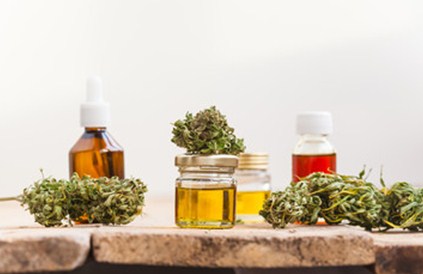
It is important to keep in mind that the laws regarding cannabis can vary from state to state, as some states have legalized the medical and recreational use of marijuana. Therefore, travelers should be aware of their destination’s laws before entering an airport or flying with medical marijuana.
Medical Marijuana
Medical marijuana is the use of cannabis and its derivatives to treat a variety of conditions, including chronic pain, nausea associated with chemotherapy, and muscle spasms caused by multiple sclerosis. Medical cannabis may be used as an alternative to traditional prescription drugs and can help reduce discomfort and improve the quality of life for many patients. Medical marijuana laws vary from state to state, so it is important to familiarize yourself with your local regulations before engaging in any activities related to medical marijuana use.
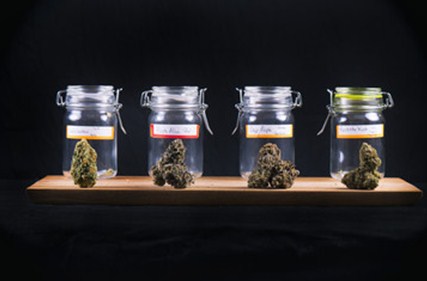
All of our doctors take a holistic approach to treatment, considering all aspects of a patient’s condition, lifestyle, and needs when providing their recommendations. The compassion and care they show are unmatched, as they strive to help each individual find the best solution for their health. If you think medical marijuana may be beneficial for you, get in touch with one of our medical marijuana doctors today. Together we can explore your options to find the right treatment option for you. Call us today at (800) 250-6737!

